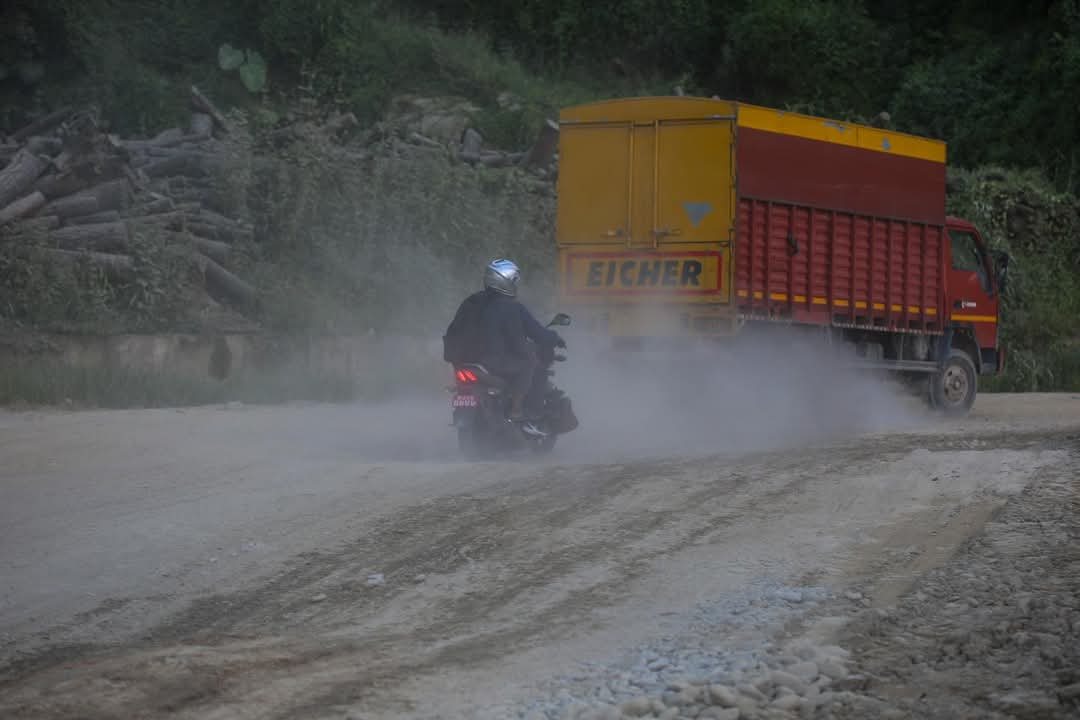Dhulikhel, 25 January, 2025 – The Araniko Highway, a critical 115-km route connecting Nepal to the Tibet Autonomous Region of China, has long been a lifeline for the country's trade and transportation network. Opened in 1967 after the Nepal-China trade agreement, the highway has greatly benefited both countries, serving as a vital link for international commerce and local livelihoods. However, years of neglect and natural disasters have left the highway in a state of disrepair, jeopardizing its utility and significance.
The highway's condition has worsened following the 2015 earthquakes, with frequent landslides, flash floods, and fragile topography leading to cracks and instability along its route. The Sindhupalchok section, particularly the Bahrabise-Kathmandu stretch, remains in a dire state. Reports highlight areas such as Mahabhir, Kothe, and Simle, where large sections of the road have either caved in or become too narrow for heavy vehicles to pass, crippling trade and local commutes.
The challenges posed by the highway's deterioration became evident during the COVID-19 pandemic when landslides delayed the transportation of essential goods. In July 2021, an oxygen plant imported from China for Bir Hospital had to be rerouted through Rasuwagadhi-Kerung due to impassable road conditions, showcasing the highway’s critical role in emergencies.
In an attempt to address these issues, the government allocated Rs 3.6 million in 2023 to repair a 26-km section of the highway. However, progress has been slow, with additional delays despite interest expressed during Prime Minister KP Sharma Oli’s visit to China in December 2024 to advance the Trans-Himalayan Multi-Dimensional Connectivity Network.
Maintaining the highway is essential not only for trade but also for the livelihoods of the local population, who depend on it to transport goods to major markets. Experts stress the need for immediate action, including slope stabilization, geological assessments, and collaboration with local governments. The Ministry of Physical Infrastructure and Transportation, along with the Department of Roads, faces mounting pressure to repair the most vulnerable sections without further delays.
Given its economic and strategic importance, neglecting the highway could lead to severe repercussions for Nepal’s trade and development. As a symbol of Nepal-China cooperation and a lifeline for millions, restoring the Araniko Highway is not just a necessity—it is an imperative for national growth and local well-being.